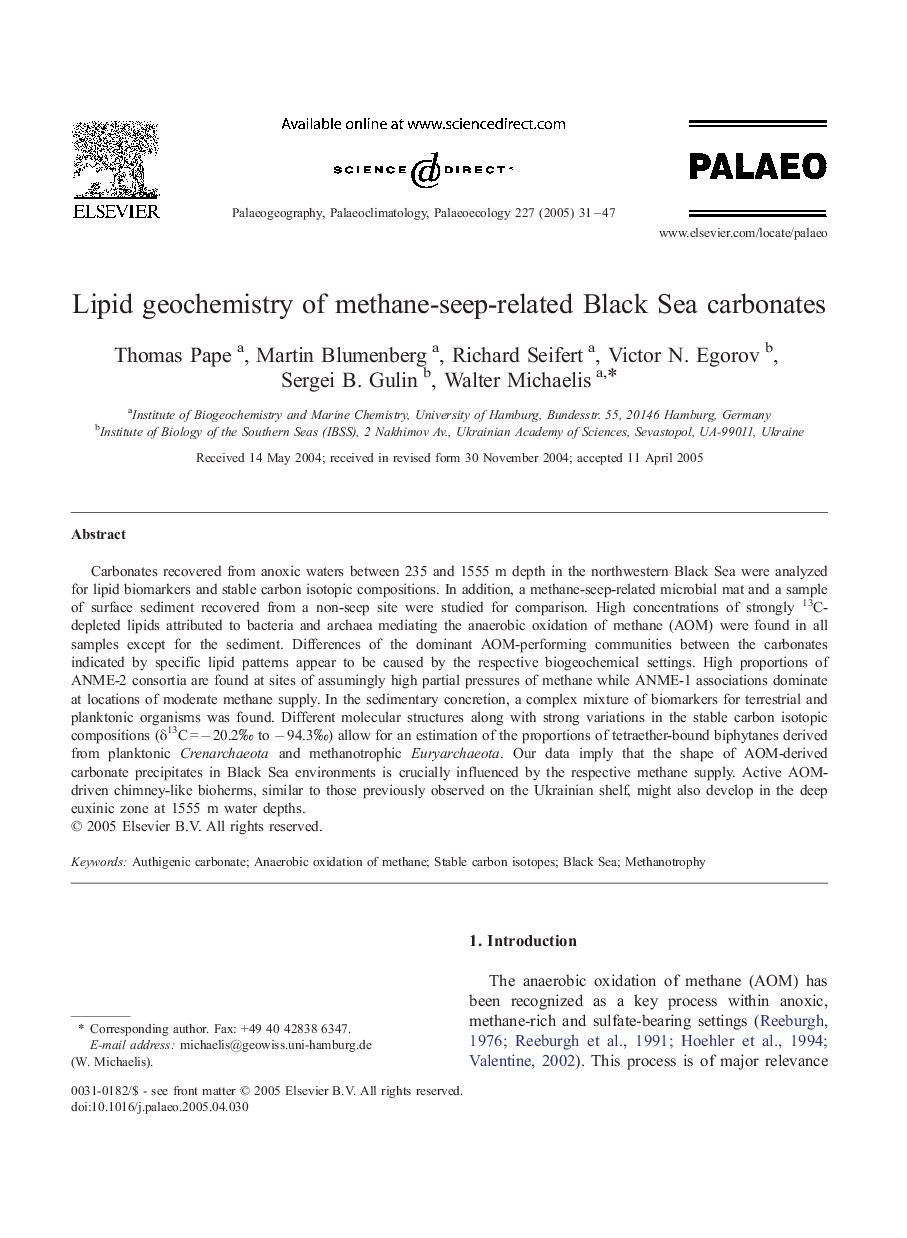| Article ID | Journal | Published Year | Pages | File Type |
|---|---|---|---|---|
| 9462990 | Palaeogeography, Palaeoclimatology, Palaeoecology | 2005 | 17 Pages |
Abstract
Carbonates recovered from anoxic waters between 235 and 1555 m depth in the northwestern Black Sea were analyzed for lipid biomarkers and stable carbon isotopic compositions. In addition, a methane-seep-related microbial mat and a sample of surface sediment recovered from a non-seep site were studied for comparison. High concentrations of strongly 13C-depleted lipids attributed to bacteria and archaea mediating the anaerobic oxidation of methane (AOM) were found in all samples except for the sediment. Differences of the dominant AOM-performing communities between the carbonates indicated by specific lipid patterns appear to be caused by the respective biogeochemical settings. High proportions of ANME-2 consortia are found at sites of assumingly high partial pressures of methane while ANME-1 associations dominate at locations of moderate methane supply. In the sedimentary concretion, a complex mixture of biomarkers for terrestrial and planktonic organisms was found. Different molecular structures along with strong variations in the stable carbon isotopic compositions (δ13C = â 20.2â° to â 94.3â°) allow for an estimation of the proportions of tetraether-bound biphytanes derived from planktonic Crenarchaeota and methanotrophic Euryarchaeota. Our data imply that the shape of AOM-derived carbonate precipitates in Black Sea environments is crucially influenced by the respective methane supply. Active AOM-driven chimney-like bioherms, similar to those previously observed on the Ukrainian shelf, might also develop in the deep euxinic zone at 1555 m water depths.
Keywords
Related Topics
Physical Sciences and Engineering
Earth and Planetary Sciences
Earth-Surface Processes
Authors
Thomas Pape, Martin Blumenberg, Richard Seifert, Victor N. Egorov, Sergei B. Gulin, Walter Michaelis,
